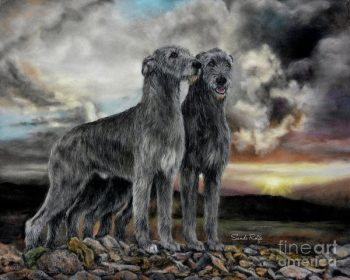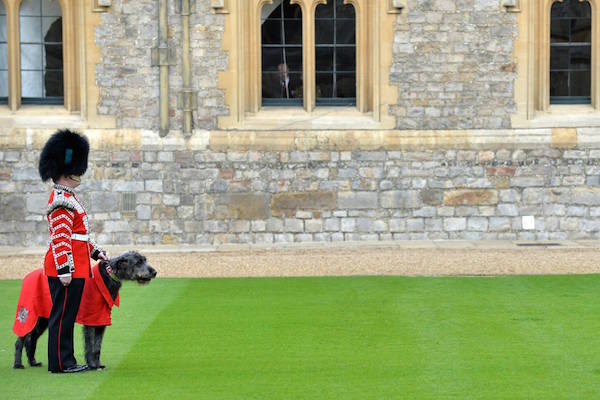
Around the time George married Lydia, his interest in “rough Greyhounds” began in earnest, dogs he’d seen while stationed in India with the 2nd Punjab Cavalry. After the wedding, and somewhere in between having seven children, Captain Graham purchased the “Oaklands” estate he renamed “Rednock,” and while it’s probable that he needed more space for a growing family, he was also looking for grounds on which he could begin his breeding program for the breed we know as the Irish Wolfhound.
Captain George August Graham would go on to play a pivotal role in preserving and promoting the Irish Wolfhound. He became a judge, and in 1885, published a book, “The Irish Wolfhound.” He also founded The Irish Wolfhound Club and became its first president, a post he held until 1908. In 1886, the breed standard he wrote was accepted by the Kennel Club. To further promote the breed, Captain Graham presented his idea of a fine Wolfhound to the Irish Guards at the Kennel Club show of 1902. To this day, the Regimental Mascot is an Irish Wolfhound.
In 1909, Captain Graham passed away at the age of 76 at Rednock, a year after Lydia had died. A local newspaper reported that his funeral was “a grand affair, no doubt due to the part he played in the life of the town…as the procession passed through the town the business premises en route were closed, and windows shuttered, whilst blinds were drawn at the private residences; and one was cognizant that a gentleman highly respected by all had passed away.”
Over the years, Capt. Graham’s grave in St Mark’s churchyard, in Dursley, Gloucestershire, had fallen into disrepair, and an ambitious campaign was launched by a local historian, Andrew Barton, and Dr Nicholas Wilkes to raise the funds needed to restore the grave, and to find any of Captain Graham’s living descendants.
In 2009, the 100th anniversary of Captain Graham’s death, a group of Irish Wolfhound affectionados, their dogs, and officials from the Irish Wolfhound Club, the Irish Wolfhound Club of Ireland, the Irish Wolfhound Club of Scotland and the Irish Wolfhound Club of Norway met Captain Graham’s family at new buildings at the Rednock School in Dursley, Gloucestershire (built on the site of Captain Graham’s home, and named after his estate). And then they did something very special.
At 11.00 am, exactly one hundred years to the hour that Capt. Graham was buried, a service was held in his memory. Rory Webster, great-grandson of Captain Graham, gave an address, and to witness the reading were twelve Irish Wolfhounds. A piper lead the congregants to Capt. Graham’s graveside after the service where wreaths donated by the Irish Wolfhound clubs were laid by the family were laid.
This is part of the Irish Wolfhound’s legacy. It is worth remembering because it is the story of real people whose lives were woven into the tapestry of this breed. It is the story of George and Lydia, and of Edith Flora, Violet Beatrice, Constance Alice, Caroline, the twins, Malcolm and Alec, and Alison Mildred, George and Violet’s children who grew up with dogs bigger than they were for part of their lives. Each breed has a story. Do you know your breed’s?
Irish Wolfhound Pair by Sandi Rolfe is available as a print, pouch, greeting card and more here. Image of Capt. Graham and his dog was found on Pinterest.


